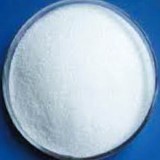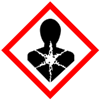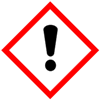 |
Furosemide or Frusemide SDS Safety Data Sheet of Supplier Exporter Manufacturers' Representative |
Email: info@ammol.org |
Call Toll Free +1-855-552-6665 |
Quick Links to Products: N Butylbenzenesulfonamide | Formaldehyde Solution | Formic Acid | Fumaric Acid | Furosemide | D-Galactose | Gallic Acid | Gellan Gum | Gentian Violet | Gluconic Acid | Glutamic Acid | Glutaric Anhydride | Nicotinamide | and more -- |
Furosemide or Frusemide
CAS Number: 54-31-9
Molecular Formula: C12H11ClN2O5S
Molecular Weight: 330.74

Furosemide or Frusemide
Furosemide or Frusemide or 4-chloro-2-((furan-2-ylmethyl)amino)-5-sulfamoylbenzoic acid SDS GHS Safety Data Sheet
MSDS Sheet, Material Safety Data Sheet 26-Jan-25
1. Product Identification
Product Name & Other Names: Furosemide or Frusemide or 4-chloro-2-((furan-2-ylmethyl)amino)-5-sulfamoylbenzoic acid.
CAS Number: 54-31-9
EINECS EC Number: 200-203-6
Relevant uses and uses advised against (if any): Fracturing and Industrial Manufacturing Use.
Supplier: As per letterhead.
2. Hazards Identification
GHS, Globally Harmonized System Classification in accordance with 29 CFR 1910
Classification according to Regulation (EC) No 1272/2008
Acute toxicity, Oral (Category 4), H302
Reproductive toxicity Category 1B - H360
Labeling according to GHS & Regulation (EC) No 1272/2008
GHS Label Elements  Health Hazard |
GHS Label Elements |
Signal Words: Danger
Hazard Statements:
H302 Harmful if swallowed.
H360: May damage the unborn child. May damage fertility.
Precautionary Statements:
P201: Obtain special instructions before use.
P260: Do not breathe dust/fume/gas/mist/vapors/spray.
P280: Wear protective gloves/protective clothing/eye protection/face protection.
P281: Use personal protective equipment as required.
P301+330+331: IF SWALLOWED: Rinse mouth. Do NOT induce vomiting.
P302+P352: IF ON SKIN: Wash with plenty of soap and water.
P304+340: IF INHALED: Remove victim to fresh air and keep at rest in a position comfortable for breathing.
P305+351+338: IF IN EYES: Rinse cautiously with water for several minutes.
P308+P310: IF exposed or concerned: immediately call a POISON CENTER or doctor/ physician.
3. Composition/Information on Ingredients
Product Name & Other Names: Furosemide or Frusemide or 4-chloro-2-((furan-2-ylmethyl)amino)-5-sulfamoylbenzoic acid.
CAS Number: 54-31-9
EINECS EC Number: 200-203-6
4. First Aid Measures
Always seek medical attention after first aid measures are provided.
Inhalation: If inhaled, remove to fresh air. If not breathing, give artificial respiration. If breathing is difficult, give oxygen. Get medical attention.
Ingestion: Never give anything by mouth to an unconscious person. Get medical attention.
Skin Contact: Immediately flush skin with plenty of water for at least 15 minutes while removing contaminated clothing and shoes. Get medical attention.
Eye Contact: Check for and remove any contact lenses. In case of contact, immediately flush your eyes with plenty of water for at least 15 minutes. Get medical attention if irritation occurs.
5. Fire Fighting Measures
Fire: Combustible at high temperature. Vapors are heavier than air and may spread along floors. Forms explosive mixtures with air on intense heating. Development of hazardous combustion gases or vapors is possible in the event of fire. In a fire or if heated, a pressure increase will occur and the container may burst.
Suitable extinguishing media: Water spray, dry powder, foam, carbon dioxide. Avoid solid water stream as it can scatter the fire.
Products of Combustion: Oxides of carbon and sulfur, chlorine compounds, along with toxic fumes will be formed.
Fire Extinguishing Media: Use water spray, alcohol-resistant foam, dry chemical, or carbon dioxide. Use means suitable for extinguishing surrounding fire.
Special Information: In the event of a fire, wear full protective clothing and NIOSH-approved self-contained breathing apparatus with full face piece operated in the positive pressure mode.
6. Accidental Release Measures
Personal precautions, protective equipment, and emergency procedures: Avoid breathing dust/fumes/gas/mist/vapors/spray. Use individual protective equipment (waterproof boots, suitable protective clothing, safety glasses, etc.).
Environmental precautions: Do not let the product enter drains, soil, or water sources.
Methods and materials used for containment cleanup procedures and Storage:
Small Spill: For small spills use appropriate tools to put the spilled solid in a convenient waste disposal container.
Large Spill: Contain spilled material. Cover with an inert, non-combustible absorbent material, (e.g., sand, earth, diatomaceous earth, vermiculite). Use a shovel to put into a convenient waste disposal container.
7. Handling and Storage
Precautions for safe handling: Apply according to good manufacturing and industrial hygiene practices. Ensure proper ventilation. Product should be worked up in closed equipment as far as possible. Wash thoroughly after handling. Do not drink, eat, or smoke while handling. Avoid contact with skin, eyes, and clothing. Minimize dust generation. Avoid breathing dust/fumes/gas/mist/vapors/spray. Keep container tightly closed. Avoid ingestion and inhalation. Use individual protective equipment (waterproof boots, suitable protective clothing, safety glasses, etc.).
Conditions for safe storage, including any incompatibilities: Store in cool, dry, and ventilated area away from heat sources and protected from sunlight in tightly closed original container. Keep air contact to a minimum. Do not leave the material container open. Store protected from heat, sparks and ignition sources and incompatible materials. Avoid inhalation of dust/mist/vapor. Do not store with incompatible materials like oxidizing agents. Containers of this material may be hazardous when empty. Storage: Room temperature.
8. Exposure Controls/Personal Protection
Airborne Exposure Limits: Contains no substances with occupational exposure limit values. Ensure minimum contact.
Ventilation System: A system of local and/or general exhaust is recommended to keep employee exposures below the Airborne Exposure Limits.
Personal Respirators (NIOSH Approved): If the exposure limit is exceeded and engineering controls are not feasible, a full face piece particulate respirator (NIOSH type N100 filters) may be worn for up to 50 times the exposure limit or the maximum use concentration specified by the appropriate regulatory agency or respirator supplier, whichever is lowest.
Skin Protection: Wear impervious protective clothing, including boots, gloves, lab coat, apron or coveralls, as appropriate, to prevent skin contact.
Eye Protection: Use chemical safety goggles and/or full-face shield where dusting or splashing of solutions is possible. Maintain eye wash fountain and quick-drench facilities in work area.
9. Physical and Chemical Properties
Appearance: Off - white powder.
Odor: Odorless.
Odor threshold: Not applicable.
pH: No information found.
Relative density: No information found.
Melting point/freezing point: 210C to 220C literature.
Initial boiling point and boiling range: 582C predicted.
Flash Point: No information found.
Auto-ignition temperature: No information found.
Decomposition temperature: No information found.
Upper/lower flammability or explosive limits: No information found.
Vapor pressure: No information found.
Vapor density: No information found.
Evaporation rate: No information found.
Flammability (solid, gas): No information found.
Partition coefficient: n-octanol/water: No information found.
Solubility: Very slightly soluble in Water.
Viscosity: No information found.
10. Stability and Reactivity
Stability: It is stable under ordinary conditions of use and storage. Forms explosive mixtures with air on intense heating. Dust explosion for fine distribution, when whirled up in air.
Hazardous Decomposition Products: Toxic gases and vapors may be released if involved in a fire. Oxides of carbon and sulfur, chlorine compounds, along with toxic fumes will be formed.
Hazardous Polymerization: Will not occur.
Incompatibilities: Oxidizing agents.
Conditions to Avoid: Incompatibles, heat, sunlight.
11. Toxicological Information
LD50 Oral Rabbit: > 800 mg/kg.
Carcinogenic Effects: Not a reported carcinogen.
Reproductive Toxicity: May damage the unborn child. May damage fertility.
Developmental Toxicity: No information found.
12. Ecological Information
Toxicity to fish: No information found.
Persistence and Degradability: No information found.
Mobility: No information found.
Bioaccumulation/ Accumulation: No information found.
Results of PBT and vPvB assessment: No information found for assessment.
13. Disposal Considerations
Whatever cannot be saved for recovery or recycling should be managed in an appropriate and approved waste disposal facility. See section 2.
14. Transport Information
USA DOT & ADR/RID: Not regulated.
IATA & IMDG: Not regulated.
15. Regulatory Information
USA:
SARA 311/312: See section 2.
California Proposition 65: Not listed for causing cancer, reproductive harm or birth defects.
16. Other Information
Disclaimer:
**************************
Our company provides this MSDS sheet in good faith but makes no representation as to its comprehensiveness or accuracy. This SDS sheet is intended only as a guide to the appropriate precautionary handling of the material by a properly trained person using this product. The above information has been compiled from various sources and has the possibility of discrepancy and being out-dated information. Individuals receiving the information must exercise their independent judgment and do further search in determining its appropriateness for a particular purpose. In no case shall our company be liable to loss or damages by the product user.
**************************
Please visit Main Page of Furosemide or Frusemide Suppliers.
American Molecules, also known as ammol.org is a distributor, supplier and manufacturers' representative of all types of Pharmaceuticals, Functional Ingredients, Excipients and Specialty Chemicals in Texas USA. Our principals manufacture supply and export USP NF BP, Ph Eur, etc grades of chemicals pure and reagent grade, mineral fortifiers, FCC food grade. Tailor made particle size and customized specifications are offered. The principal's facility is having one or more of the certifications like FDA approval and GLP, cGMP, ISO9001, ISO14001, ISO/IEC 17025, ISO22000, FSSC 22000, ISO45001, FSSAI, Kosher, HALAL, COPP, WHO-GMP certified and Written Confirmation (WC) for export to Europe is available. The manufacturers suppliers and exporters observe WHO Good Manufacturing Practices and Good Laboratory Practices.





Suppliers and Manufacturers' Representative:

9910 Bent Oak Dr
Houston, TX 77040, USA
Call Toll Free: 1-855-55-AMMOL 1-855-552-6665
Email: info@ammol.org
